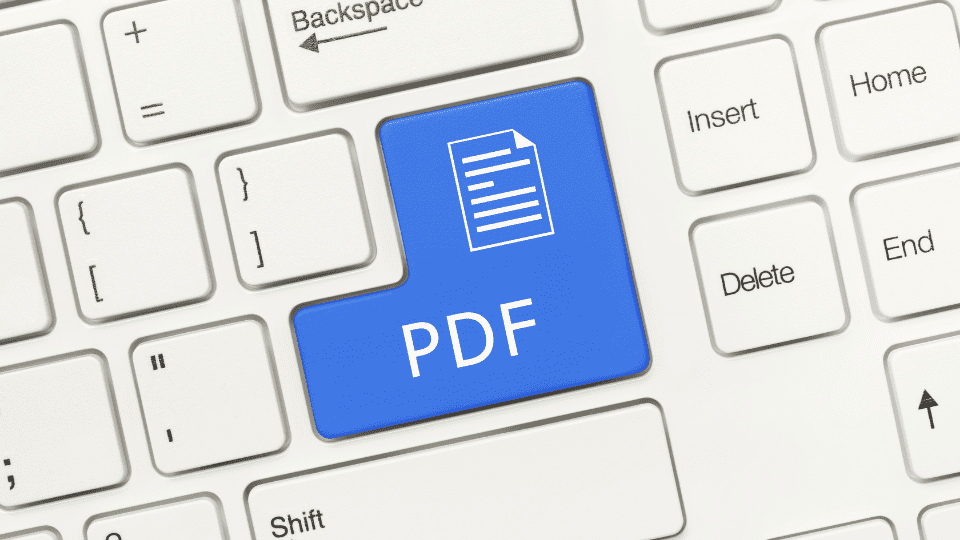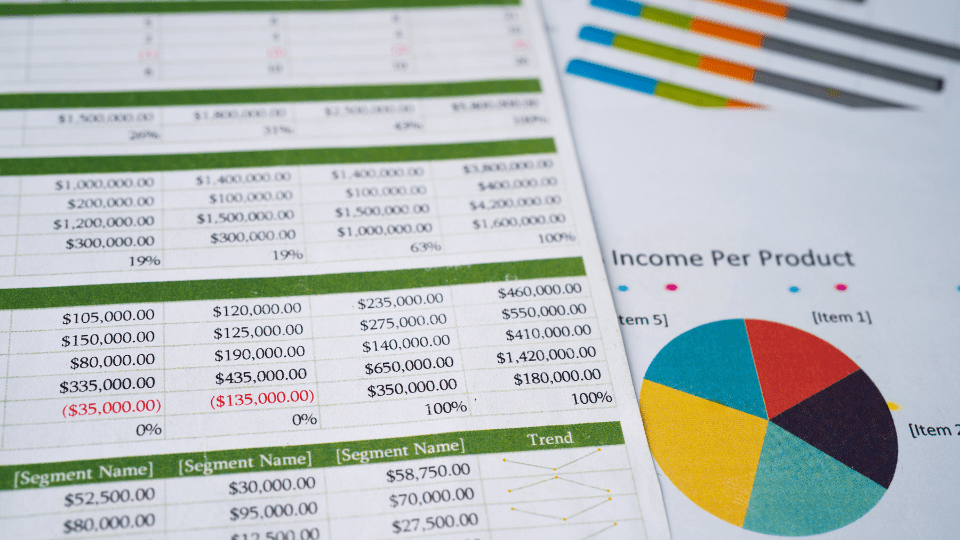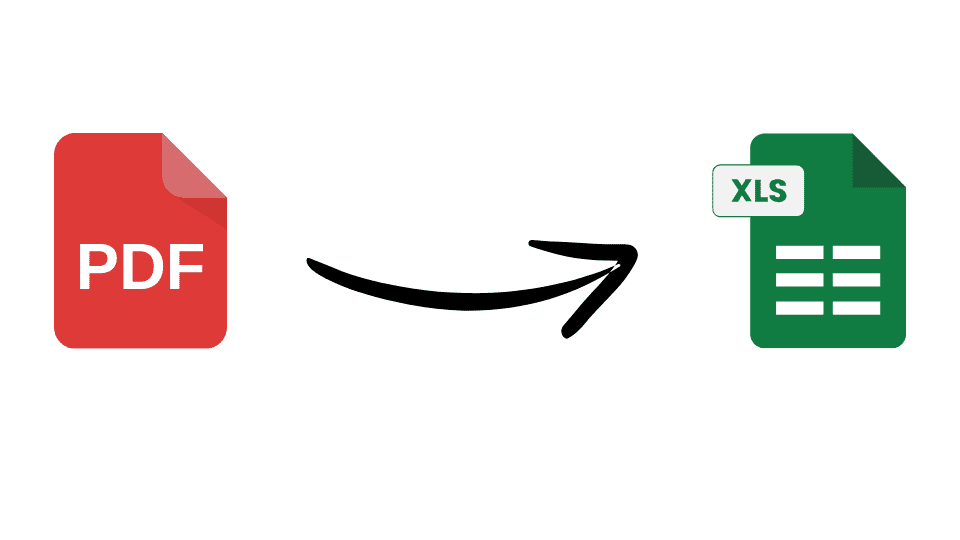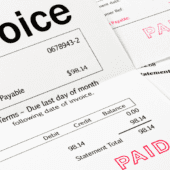Transferring PDF files to Google Sheets can be executed via two foremost strategies. The first approach involves manual data access, in which users manually replica and paste facts from the PDF file into Google Sheets. This method calls for starting both the PDF report and Google Sheets concurrently, selecting the desired content material inside the PDF, and transferring it into the corresponding cells in Google Sheets using replica and paste commands. This technique offers management over data selection and entry but may be time-consuming and at risk of errors, specifically with huge datasets.
The 2d technique makes use of Google Sheets’ built-in features, which include “IMPORT DATA” or “IMPORTED,” to at once import information from external sources, together with PDF files. Users upload the PDF report to a cloud storage provider like Google Drive, after which they use the correct feature in Google Sheets to retrieve the facts. This technique is extra automated and green, particularly for based statistics or tables inside the PDF. However, it may require additional configuration and adjustment of parameters, relying on the layout and format of the PDF report.
Considerations for each strategy include records formatting and cleaning, in addition to using automation gear for massive-scale conversions. Despite their variations, each strategy enables customers to switch facts from PDF files into Google Sheets, facilitating less difficult analysis, collaboration, and visualization of records in the files.
How Its Work?
Here’s an outline of techniques for transferring PDF information to Google Sheets, in conjunction with info on the way to upload a PDF picture to text:

Method 1: Using Google Apps Script (PDF files to Google Sheets)
Google Apps Script is an effective device that lets customers automate obligations and interact with Google Workspace applications like Sheets. Follow those steps to switch PDF records to Google Sheets the usage of Apps Script:
- Install the pdf to google spreadsheet Script: Start by establishing Google Sheets and navigating to “Extensions”> “Apps Script.” This opens the Google Apps Script editor. Delete any code inside the script editor and paste the pdf to Google spreadsheet script code. Save the script.
- Authorize the Script: Before running the script, you want to authorize it to get entry to your Google Drive. Click on the “Run” button to execute the script. Follow the prompts to allow the script.
- Select PDF File: After authorization, move back to your Google Sheet, and also you must see a brand new menu item categorized “pdf to Google Spreadsheet.” Click on it and pick out “Import PDF.” Choose the PDF document you want to import information from.
- Review and Import Data: The script will parse the PDF and show the extracted records in a dialogue field. Review the information to ensure accuracy, then click “Import Data” to transfer it to your Google Sheet.

Method 2: Using External Tools (PDF files to Google Sheets)
Alternatively, you may use outside equipment like Zapier or Integromat to automate the system of shifting PDF statistics to Google Sheets:
- Create a Zap or Scenario: In Zapier or Integromat, create a new automation workflow. Choose a trigger that initiates the system, which includes receiving a new PDF report to your e-mail or cloud garage.
- Set Up Actions: Once brought about, specify moves to be done. For instance, in Zapier, you can use the “Parseur” app to extract data from the PDF and then upload it to Google Sheets using the “Google Sheets” app. In Integromat, you could use modules like “PDF Parser” and “Google Sheets” to acquire similar effects.
- Configure Data Mapping: In both Zapier and Integromat, you’ll want to map the extracted facts fields to corresponding columns to your Google Sheet. This guarantees that the data is appropriately transferred and prepared.
You can use Optical Character Recognition (OCR) gear to upload a PDF photo to text. OCR software program converts images containing textual content into editable text files. Here’s a way to include this into your workflow:
Incorporate Extracted Text: Once you have the extracted text, you may add it to your Google Sheet using the strategies described above. This text can now be analyzed, manipulated, or organized along with other facts for your sheet. Following these methods, you can efficiently switch PDF statistics to Google Sheets and convert PDF photographs into text for additional analysis and processing.
Challenges With Parsing PDF files to Google Sheets
Parsing a PDF document can pose several demanding situations due to PDF files’ inherent complexity and variability. These challenges include:
Complexity of Format
PDF files can incorporate a huge range of factors consisting of text, snapshots, tables, and links, frequently arranged in complex layouts. Parsing these factors accurately calls for sophisticated algorithms to interpret the structure correctly.
Encoding and Compression
PDF files may use numerous encoding and compression techniques for text and photos, which can complicate the extraction procedure. Different encoding schemes and compression algorithms want to be handled correctly throughout parsing.
Text Extraction
Text extraction from PDFs may be difficult due to embedded fonts, ligatures, and kerning. In a few cases, text can be represented as pics or vector graphics, requiring optical character popularity (OCR) techniques for extraction.
Layout Preservation
Maintaining the unique layout and formatting of the record, even as parsing, is important, especially for documents with complex systems or specialized formatting requirements. Ensuring accurate spatial representation of factors like tables and columns adds complexity.
Metadata and Annotations
PDF documents can include metadata, annotations, and interactive factors like bureaucracy and multimedia content. Parsing those additional factors calls for particular coping with extracting applicable facts at the same time as retaining document integrity.
Security Features
PDF files can be encrypted or password-blanketed, requiring authentication and decryption before parsing. Handling safety features provides a layer of complexity to the parsing procedure.
Version Compatibility
PDF files may be created using unique versions of the PDF fashionable, every with its specs and features. Ensuring compatibility with various PDF versions is important for dependable parsing across unique documents.
Error Handling and Robustness
PDF documents may be corrupted, incomplete, or malformed, leading to parsing errors or sudden conduct. Implementing robust mistakes-managing mechanisms is vital to deal with such conditions gracefully and save you from utility crashes or data loss.
Addressing these challenges requires superior parsing strategies, mistakes handling techniques, and adherence to PDF standards and specs.
“Simplified PDF files to Google Sheets Transfer: Exploring Two Methods”
Talk to Our Experts
The Modern Approach to Parsing PDF Documents
Complexity of PDF Structure
PDF files will have complicated systems, including nested elements, layers, and non-linear content material. This complexity poses a tremendous undertaking for parsing algorithms, as they need to accurately interpret the record’s format and hierarchy to extract significant statistics. This complexity will increase the problem of constructing sturdy parsing algorithms that can effectively deal with diverse PDF structures.
Text Extraction Accuracy
One of the number one desires of parsing PDF files to Google Sheets is to extract text accurately. However, PDF documents frequently include textual content encoded in non-fashionable or proprietary codecs, such as embedded fonts or image-based textual content. Extracting text accurately from such factors may be hard, main to errors or inaccuracies inside the parsed output. Ensuring high accuracy in text extraction is crucial for applications that depend on the parsed records for addition evaluation or processing.
Handling of Visual Elements
PDF documents frequently encompass visible factors, including pics, graphs, tables, annotations, and textual content. Parsing algorithms need to identify and identify those extractors as they should be; they frequently comprise precious information that can not be represented solely as text. Handling visual factors adds some other layer of complexity to the parsing system and calls for state-of-the-art techniques, along with optical character popularity (OCR) for extracting text from photos.
Metadata Extraction and Interpretation
PDF files can include a wide variety of metadata, such as writer facts, advent dates, report homes, and embedded hyperlinks. Extracting and interpreting this metadata correctly is essential for information on the context and origin of the document. However, parsing metadata can be difficult due to variations in how it’s miles encoded and embedded within PDF documents. Additionally, decoding metadata efficiently requires parsing algorithms to effectively address specific metadata codecs and standards.
Security and Privacy Concerns
Parsing PDF files may additionally increase safety and privacy issues, especially while handling sensitive or private information. PDF files can contain embedded scripts, hyperlinks, or hidden content that pose safety dangers if no longer handled nicely. Additionally, extracting textual content or metadata from PDF files can inadvertently reveal sensitive data, including identifiable facts (PII) or intellectual assets. Ensuring the safety and privateness of parsed statistics is critical, requiring parsing algorithms to put in force robust security measures, consisting of sanitizing extracted content material and adhering to statistics safety regulations.
PDF Conversion Metrics
Conversion Rate
Conversion fee refers to the proportion of customers who successfully convert a PDF document into every other format, along with Word, Excel, or HTML. This metric allows for gauging the effectiveness of the PDF conversion procedure. An excessive conversion rate shows that the conversion tool is user-friendly and successfully converts files without errors or system defects. Conversely, a low conversion price may also characterize problems, including compatibility issues, slow processing times, or negative consumer enjoyment.
Conversion Time
Conversion time measures the length it takes for a PDF report to be transformed into any other format. This metric is vital for assessing the efficiency and pace of the conversion system. A shorter conversion time is typically preferred as it shows users faster processing and turnaround instances. Factors that may impact conversion time encompass the PDF report’s dimensions, its content’s complexity, and the conversion device’s or software program’s performance.
Conversion Accuracy
Conversion accuracy evaluates the constancy and precision of the transformed document as compared to the unique PDF. It assesses whether the format, formatting, textual content, snapshots, and other factors are as they should be preserved at some stage in the conversion process. High conversion accuracy ensures the transformed report retains its integrity and value. Conversion accuracy can cause distorted layouts, missing content, or formatting errors, resulting in a good person experience and capacity productiveness issues.
File Size Optimization
File size optimization measures the volume to which the scale of the transformed document is optimized without compromising its pleasantness. pdf to Google Sheets converter online tools regularly provide functions to lessen the report length of transformed documents, which may be particularly beneficial for sharing and garage purposes. This metric helps examine the efficiency of the conversion device’s optimization algorithms. A nicely optimized document length ensures that converted files are lightweight, making them easier to percentage, download, and save while keeping applicable exceptional standards.
User Satisfaction
User satisfaction encompasses the overall pleasure degree of users with the PDF conversion procedure and the great of the converted documents. It considers factors like ease of use, reliability, speed, accuracy, and the supply of favored output formats. User delight can be measured via surveys, feedback mechanisms, or user rankings and reviews. Monitoring user satisfaction affords treasured insights into areas for development and ensures that the PDF conversion device meets the wishes and expectancies of its customers.
Methods of Converting PDF files to Google Sheets
Manual Data Entry
– Description: This technique entails manually typing the statistics from the PDF files to Google Sheets.
– Procedure: Open the PDF document and Google Sheets aspect by using aspect. Then, manually enter every facts point, cellular by way of cellular, into the corresponding cells in Google Sheets.
– Pros: Provides full management of management of information entry procedure, allowing for careful verification and correction of errors.
– Cons: Time-ingesting and liable to human error, especially with massive or complicated datasets.
Copy and Paste
– Description: This approach entails copying the text from the PDF and pasting it immediately into Google Sheets.
– Procedure: Select the PDF’s textual content, reproduce it, and then paste it into Google Sheets. Google Sheets will attempt to parse the text into cells mechanically.
– Pros: An incredibly brief and simple technique for moving textual facts. Preserves formatting to some extent.
– Cons: Formatting may not continually switch as it should be, and non-textual elements (consisting of pics or tables) will no longer be protected.
Google Drive OCR (Optical Character Recognition)
– Description: Google Drive gives OCR functionality to convert scanned PDFs into editable textual content, which can then be imported into Google Sheets.
– Procedure: Upload the PDF to Google Drive, right-click on the file, and pick out “Open with”> “Google Docs.” The text may be editable once the document is open in Google Docs. Then, copy and paste the text into Google Sheets.
– Pros: Can convert scanned documents and images with textual content into editable text. Preserves a few formatting.
– Cons: May not accurately understand text in complex layouts or bad-satisfactory scans. Formatting may additionally need good-sized cleanup.
Third-Party PDF Conversion Tools
– Description: Numerous third-birthday party tools and software programs exist specially for converting PDFs to various codecs, inclusive of Google Sheets.
– Procedure: Choose a reputable PDF to Google spreadsheet converter device, add your PDF document, and follow the commands to transform it into a well-matched Google Sheets layout. Then, import the converted PDF files to Google Sheets.
– Pros: Can deal with complicated PDF layouts and massive datasets greater effectively than manual strategies. Some gear offers batch processing competencies.
– Cons: Quality and accuracy may vary depending on the device used. Free gear may have limitations on record size or the number of conversions.
Google Sheets Add-ons
– Description: Google Sheets gives add-ons that make its functionality bigger, consisting of a few facilitating PDF conversion.
– Procedure: Install a PDF conversion upload-on from the Google Workspace Marketplace. Follow the upload-on’s instructions to add your PDF and convert it right into a Google Sheets-well-matched layout.
– Pros: Integration with Google Sheets streamlines the conversion manner. Some add-ons provide advanced functions together with customizable fact extraction.
– Cons: Availability and excellent accessories can also range. Some accessories might also require a subscription or payment for complete capability.
These strategies offer diverse tactics for changing PDFs into Google Sheets, catering to one-of-a-kind options, desires, and levels of technical information. Choose the one that greatly fits your necessities and workflow.
Automating PDF to Google Sheets Conversion
Using Google Apps Script with Google Sheets API
– Description: Google Apps Script provides a powerful way to automate tasks within various Google services, which include Google Sheets. You can write a script to engage with the Google Sheets API to import records from a PDF into a Google Sheet.
– Process: Write a script that uses the Google Sheets API to create a new sheet and parse the content material of the PDF using PDF parsing libraries like PDF.Js or PDFBox. Then, populate the Google Sheet with the extracted information.
– Automation: Schedule the script to run at unique intervals using Google Apps Script’s time-driven triggers, ensuring that the conversion system is automatic.
Using Third-Party PDF Conversion Services with Google Sheets Integration
– Description: Several third-birthday celebration offerings offer APIs for changing PDFs to based facts codecs like CSV or Excel. You can combine these offerings with Google Sheets to mechanically import PDF records.
– Process: Utilize a provider like Zapier or Integromat to create a workflow that triggers PDF conversion while a brand new PDF is uploaded to a certain area (e.g., Google Drive folder). Once the conversion is complete, the records are automatically imported into a chosen Google Sheet.
– Automation: Set up the workflow to run continuously, ensuring that any new PDFs are robotically transformed and imported into the Google Sheet without manual intervention.
Using Google Cloud Platform (GCP) Services
– Description: Google Cloud Platform offers various facts processing and automation services. You can leverage Cloud Functions and Cloud Vision API to automate pdf to Google Sheets converter online.
– Process: Develop a Cloud Function that triggers while a new PDF is uploaded to Google Cloud Storage. The characteristic can use the Cloud Vision API to extract textual content and statistics from the PDF, after which these records at once right into a Google Sheet.
– Automation: Configure Cloud Storage to look at brand new PDF uploads and trigger the Cloud Function routinely. This setup guarantees that pdf to Google Sheets converter occurs seamlessly without guide intervention.
Using Python Scripts with Google Sheets API
– Description: Python gives effective libraries for PDF manipulation and Google Sheets interplay. You can write a Python script to extract statistics from PDFs and replace Google Sheets for this reason.
– Process: Develop a Python script using libraries like PyPDF2 or pdfplumber to extract text and information from PDFs. Then, use the Google Sheets API to replace a Google Sheet with the extracted data.
– Automation: Set up a cron job or mission scheduler on your nearby device or a server to run the Python script at ordinary intervals. In this manner, the pdf to google sheets converter online technique is automated without manual intervention.
Using Google Sheets Add-ons
– Description: Google Sheets supports various add-ons that increase its functionality. You can discover accessories specially designed for importing records from PDF files to Google Sheets.
– Process: Install a PDF import add-on from the Google Workspace Marketplace, including “pdf to Google spreadsheet” or “PDF.Co.” These accessories generally let you specify a PDF file to import and personalize the import settings. Once configured, the upload-on will mechanically import PDF records into the Google Sheet.
– Automation: Depending on the upload-on, you can schedule automatic imports at specific intervals or trigger imports primarily based on positive events. Check the documentation or settings of the chosen directly to configure automation options.
“Two Approaches for Importing PDF files to Google Sheets: A Comparison”
Talk to our professionals.
PDF files to Google Sheets With Sdlccorp
Converting PDF files to Google Sheets with SDLCCORP integration streamlines statistics control methods, ensuring seamless records switch across platforms. This progressive solution revolutionizes traditional records access methods, providing efficiency and accuracy in managing numerous datasets. By harnessing the electricity of the SDLCCORP era, customers can effectively extract information from PDF documents and import them without delay into Google Sheets, putting off the need for guide input and minimizing the danger of errors.
Integrating PDF files to Google Sheets empowers users to effect transform static PDF tables into dynamic, editable spreadsheets with just a few clicks. With the inclusion of the keyword “pdf desk to excel” in the content, this integration further complements its capability, allowing customers to specifically goal and convert tabular information inside pdf to google sheets converter compatible codecs. This complete method caters to diverse user wishes, whether or not it’s reading monetary reviews, compiling studies information, or dealing with stock lists.
Furthermore, seamless synchronization between PDF files and Google Sheets facilitates real-time collaboration and record sharing amongst team members. Users can work collaboratively on Google Sheets, making updates and revisions immediately handy to all stakeholders. This fosters collaborative surroundings conducive to productiveness and knowledgeable decision-making.
In precis, the PDF files to Google Sheets integration with SDLCCORP represents a big development in information management technology. This answer empowers users to streamline workflows, improve performance, and release the entire potential of their information belongings by simplifying the conversion technique and enhancing platform interoperability.
Creating a Simple Pipeline
Define Objectives and Inputs
Begin by using surely outlining the targets of your pipeline. What trouble are you trying to remedy, or what project are you trying to automate? Once you’ve got a clean know-how of your goals, become aware of the inputs required for your pipeline. These inputs should encompass statistics, sources, or other vital components.
Data Collection and Preprocessing
This step involves collecting the required statistics on your pipeline and preprocessing it to ensure it’s in a suitable layout for evaluation or similar processing. Data series methods will vary depending on your goals, including scraping websites, accessing databases, or gathering sensor records. Preprocessing duties may consist of cleaning the information, dealing with lacking values, and reworking it into a format appropriate for evaluation.
Model Development and Training
Once your information is preprocessed, you may begin developing and educating your fashions. This step entails choosing appropriate algorithms or fashions primarily based on your objectives and statistics characteristics. You’ll then train those models to use the accumulated and preprocessed facts. During training, you’ll modify model parameters to optimize performance and ensure the model generalizes properly to new, unseen data.
Validation and Evaluation
After educating your models, assessing their overall performance is crucial to ensure they meet your targets and necessities. This entails validating the models using separate validation datasets or pass-validation techniques to determine their generalization capacity. You’ll also want to assess the fashions’ performance metrics, including accuracy, precision, bear in mind, or F1 score, relying on the character of your project.
Deployment and Integration
Once you’re glad with the overall performance of your models, it’s time to install them into production environments. This step involves integrating the trained fashions into your existing systems or programs so they can make predictions or perform duties in actual time. You’ll want to remember factors like scalability, reliability, and security while deploying your fashions to ensure they meet manufacturing necessities.
Monitoring and Maintenance
Your pipeline requires ongoing monitoring and renovation to ensure its effectiveness even after deployment. This includes monitoring the overall performance of deployed fashions, detecting any glide or degradation in performance, and updating or retraining fashions as essential. Additionally, you’ll need to deal with troubles or bugs and constantly enhance your pipeline primarily based on remarks and new necessities.
Conclusion
The first method, using Google Apps Script, gives a seamless and automated solution for moving PDF statistics without delay into Google Sheets. By leveraging the powerful scripting capabilities of Google Apps Script, customers can create custom functions to parse PDF content material effectively. This technique is good for users who decide on automation and require a streamlined workflow for handling PDF statistics within Google Sheets. However, it can require a few programming understanding and customization to shape unique use instances.
On the other hand, the second technique, the use of 1/3-celebration PDF to Excel converters, gives simplicity and comfort to customers who opt for a greater trustworthy approach. These converters often feature person-pleasant interfaces and require minimum setup, making them reachable to customers with various ranges of technical information. By converting PDFs to Excel layouts first, customers can easily import the statistics into Google Sheets for additional analysis or manipulation. While this technique may additionally involve a further step compared to direct PDF parsing, it gives a reliable solution for converting PDF data into a compatible layout for Google Sheets.






